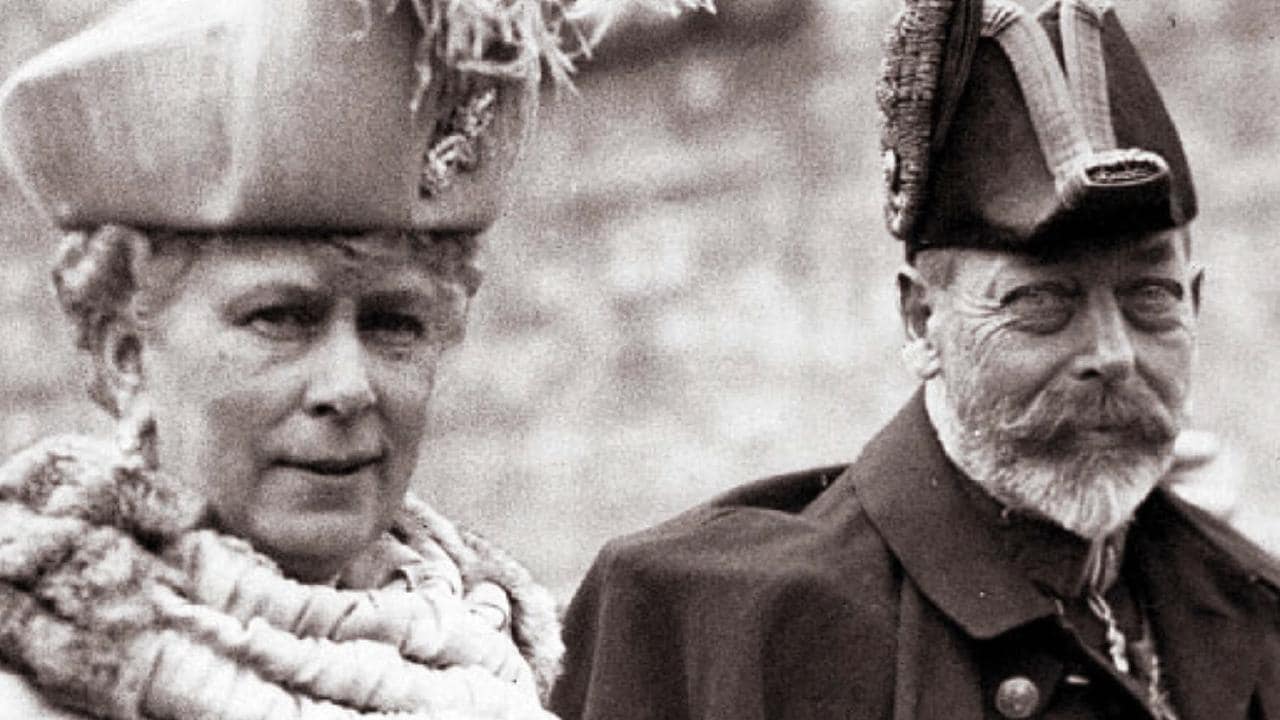Tags
Adolphus of the United Kingdom, Duke of Cambridge, George III of the United Kingdom, Grand Duchess of Mecklenburg-Strelitz, Grand Duke Friedrich Wilhelm of Mecklenburg-Strelitz, Grand Duke Georg of Mecklenburg-Strelitz, King George V of the United Kingdom, Mary Adelaide of Cambridge, Mary of Teck, Princess Augusta of Cambridge, Queen Victoria of the United Kingdom
Princess Augusta of Cambridge (July, 19, 1822 – December 5, 1916) was a member of the British Royal Family, a granddaughter of George III. She married into the Grand Ducal House of Mecklenburg-Strelitz and became the Grand Duchess of Mecklenburg-Strelitz.
Early life
Princess Augusta was born on July 19, 1822 at the Palace of Montbrillant, Hanover. Her father was Prince Adolphus, Duke of Cambridge, the seventh son of George III of the United Kingdom and Charlotte of Mecklenburg-Strelitz. Princess Augusta’s mother was Princess Augusta of Hesse-Cassel, third daughter of Landgrave Friedrich of Hesse-Cassel, and his wife, Princess Caroline of Nassau-Usingen.
Through her father, Princess Augusta of Cambridge was a great-granddaughter of George II of Great Britain, her grandmother being George II’s daughter Princess Mary. Princess Augusta of Hesse-Cassel’s uncle, (her father’s older brother) was the Landgrave Wilhelm I of Hesse-Cassel. In 1803, her uncle’s title was raised to Elector of Hesse—whereby the entire Cassel branch of the Hesse dynasty gained an upward notch in hierarchy.
As a male line granddaughter of the British monarch, Princess Augusta was titled as a British Princess with the style of Royal Highness. The young princess was baptized at the same palace on August 16, 1822, by Rev Edward Curtis Kemp (Chaplain to the British Ambassador to the Court of Berlin, The Rt. Hon. Sir George Rose).
The Princess Augusta spent her earlier years in Hanover, where her father was the viceroy on behalf of his brother, King George IV of the United Kingdom.
Princess Augusta had one brother, Prince George, later 2nd Duke of Cambridge; and one sister, Princess Mary Adelaide, later Duchess of Teck. As such, Princess Augusta was an aunt to Princess Mary of Teck, later Queen Consort of George V of the United Kingdom.
Additionally, Princess Augusta was a first cousin through her father to Queen Victoria and through her mother a first cousin to Princess Louise of Hesse-Cassel, the wife of King Christian IX of Denmark. This meant Princess Augusta was a first cousin once removed to both Princess Alexandra of Denmark and her husband King Edward VII of United Kingdom.
With her mother, she was part of the royal party at the 1838 coronation of Queen Victoria.
Marriage
On June 28, 1843, Princess Augusta married her first cousin, Friedrich Wilhelm of Mecklenburg-Strelitz, at Buckingham Palace, London. (The two were also second cousins on their fathers’ side.) Friedrich Wilhelm of Hesse-Cassel was born in Neustrelitz, the son of Grand Duke Georg of Mecklenburg-Strelitz and Princess Marie of Hesse-Cassel. He spent his youth in Neustrelitz and later went to study history and jurisprudence in University of Bonn where he befriended Prince Albert of Saxe-Coburg and Gotha.
Upon marriage, Augusta became the Hereditary Grand Duchess of Mecklenburg-Strelitz and, on September 6, 1860, the Grand Duchess of Mecklenburg-Strelitz following the death of her father-in-law, Grand Duke Georg of Mecklenburg-Strelitz.
The marriage of the Grand Duke and Grand Duchess produced two children:
1. Duke Friedrich Wilhelm of Mecklenburg-Strelitz (born and died in London, January 13, 1845)
2. Duke Adolph Friedrich of Mecklenburg-Strelitz ( July 22, 1848 – June 11, 1914); succeeded his father as Grand Duke Adolph Friedrich V of Mecklenburg-Strelitz in May 1904.
Later life
Although she spent most of her adult life in Germany, the Grand Duchess Augusta retained close personal ties to the British Royal Family. She frequently visited her mother, the Duchess of Cambridge, at her Kensington Palace apartments.
After her mother’s death in 1889, the Grand Duchess acquired a house in London’s Buckingham Gate area, where she spent a portion of the year until advanced old age made it impossible for her to travel abroad.
In making preparations for the coronation of King Edward VII and Queen Alexandra in 1901, the Duke of Norfolk consulted her on matters of etiquette and attire. This was due to her presence at the coronation of King William IV and Queen Adelaide seventy-one years earlier. She was nine years old at the time and kissed the Queen’s hand. She was also able to provide details of the coronation of Queen Victoria.
The Grand Duchess of Mecklenburg-Strelitz was particularly close to her niece, the future Queen Mary. However, old age prevented her from attending the coronation of King George V and Queen Mary on June 22, 1911.
Following the outbreak of World War I, the British Government suspended the annuity she had been receiving as a member of the British Royal Family under the Annuity, Duchess of Mecklenburgh Strelitz Act 1843. During the war, the Swedish Embassy passed letters from the Queen to her aunt, who still lived in Germany.
As an elderly lady, she was known for being cantankerous. She was also known as being quite shrewd and intelligent. In his book, Queen Mary (London, 1959), the Queen’s official biography, James Pope-Hennessy reports that the Queen’s aunt Augusta was not fond of the new science of photography, fearing it would intrude deeply into the private lives of Royal personages.
The Dowager Grand Duchess of Mecklenburg-Strelitz died on December 5, 1916 in Neustrelitz and was buried in Mirow. As the longest-lived grandchild of George III, she was the last link to the British branch of the House of Hanover.
At the time of her death, she was 94 years, 4 months and 16 days old, making her the longest-lived British princess by blood, until Princess Alice, Countess of Athlone, a male-line granddaughter of Queen Victoria, surpassed her in 1977.






























